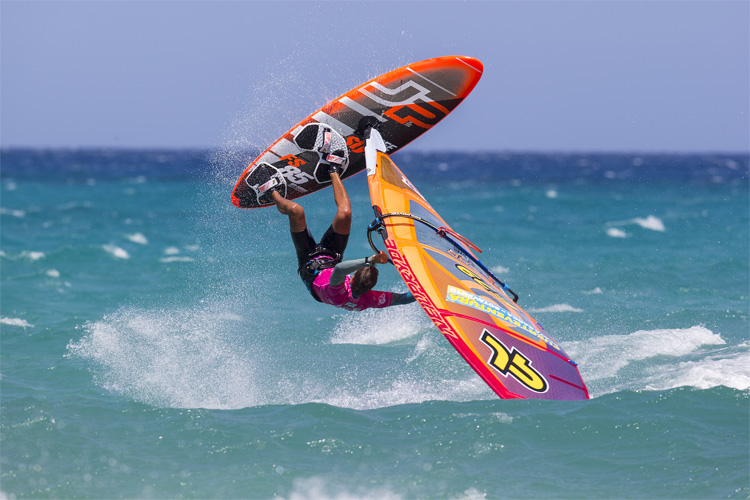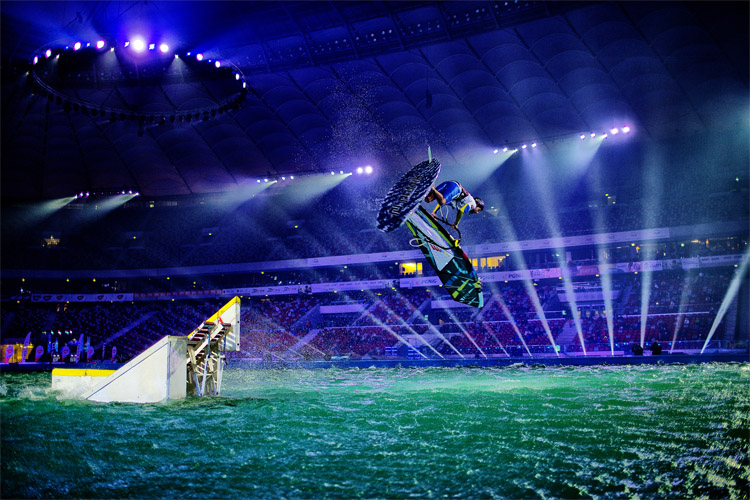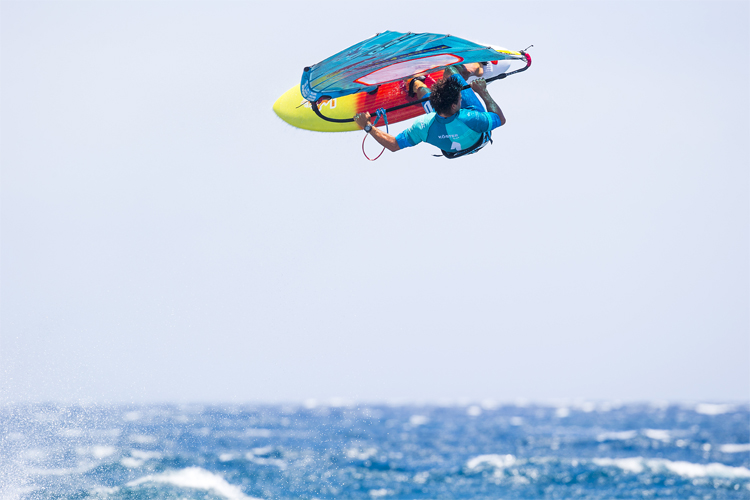There are many ways of enjoying windsurfing, and they all require the same equipment items: a board, a sail, a boom, and a mast.
Whether you're hooked on maneuvers, waves, speed, or racing, you'll always find a discipline that will make you fulfill your dreams.
Today, there are many types of sails and plenty of windsurfing board models. Each one serves a different purpose and distinct windsurfing discipline.
Fortunately, windsurfing has evolved so much that it now offers, from a sailing perspective, a wide range of opportunities.
But remember that disciplines aren't classes. In windsurfing, disciplines are ways of performing the sport. Let's take a quick look at each one of them:
Freestyle Windsurfing

Freestyle is one of the most popular windsurfing disciplines of all time. It's even been called sailboard gymnastics.
Freestyle windsurfing has evolved a lot since it first became an attraction as a side event in slalom competitions and later joined the PWA World Tour in 1998.
It's a versatile discipline that can be practiced inland or on any flat water spot. Because of its eye-catching characteristics, it is a hit among the younger generation.
In the last decades, freestyle windsurfing evolved to be quite complex and incorporate highly technical and nearly limitless tricks and maneuvers.
Freestyle is an excellent way of improving your overall sailing skills fast.
Slalom Windsurfing

Slalom is the Formula One of windsurfing and became a spectator-friendly discipline when it was added to the PWA World Tour calendar in 2005.
It's all about races, courses, tactics, speed, and highly detailed fine-tuning in equipment. In slalom windsurfing, sailors compete head-to-head and crash big time.
Whether you're racing in a downwind or figure-eight-based course, you're involved in hot pursuits with constant position changes.
Since the PWA World Tour adopted a no-rules policy, slalom races have become a dramatic playground where adrenaline is the only fuel that keeps windsurfers alive.
Wave Windsurfing

Wave sailing combines two fundamental skills: wave riding and jumping.
For many, wave windsurfing represents the essence of the sport, blending wind and surf in a unique performance cocktail.
Today, modern wave sailors are capable of surfing like pro surfers and getting to the air like pro kiteboarders.
When they launch themselves into the air, they're able to spin, loop, and rotate like feathers, providing lots of entertainment to the fans.
Speed Windsurfing

In speed windsurfing, sailors are on a quest to become the fastest performers in the world, and they need winds of more than 30 knots to set new records.
It's all about being fast and finding the optimal balance between wind force and body weight, and equipment.
Speed windsurfers measure their skills in a 500-meter course. The goal is to break or improve personal, national, continental, and world records.
The fastest windsurfer in the world is Antoine Albeau at 53.27 knots.
Foil Windsurfing

Hydrofoils are quickly revolutionizing the world of water boardsports, and they're taking over windsurfing by storm.
Wind foiling is a fun experience and is set to replace traditional fins under the boards.
For many, it will only be a matter of time until foil windsurfing becomes the standard and reaches Olympic status.
Despite the dangers associated with the sharp blade, foils are super fast and highly maneuverable.
Super X Windsurfing

Super X is a less popular windsurfing discipline that combines aspects of racing and freestyle.
Athletes compete in a downwind slalom course with floating obstacles. Rides must jump over them and cross the finish line as fast as they possibly can.
Super X made its debut in the PWA World Tour family in 2003, but it was short-lived.
Indoor Windsurfing

Indoor windsurfing was a revolutionary sailing experience first tried in Paris in 1990.
It is basically a discipline practiced in a large indoor swimming pool and powered by an array of wind turbines placed on the side of the sailing arena.
Initially, the goal was to bring new spectators to the sport by inviting them to the stadiums where competitions were held and to sell the show to TV stations.
There are two main categories in indoor windsurfing: jumping and slalom.
The downside is that it can be expensive to set up, and that is probably why we rarely see indoor windsurfing events be announced on a regular basis.
